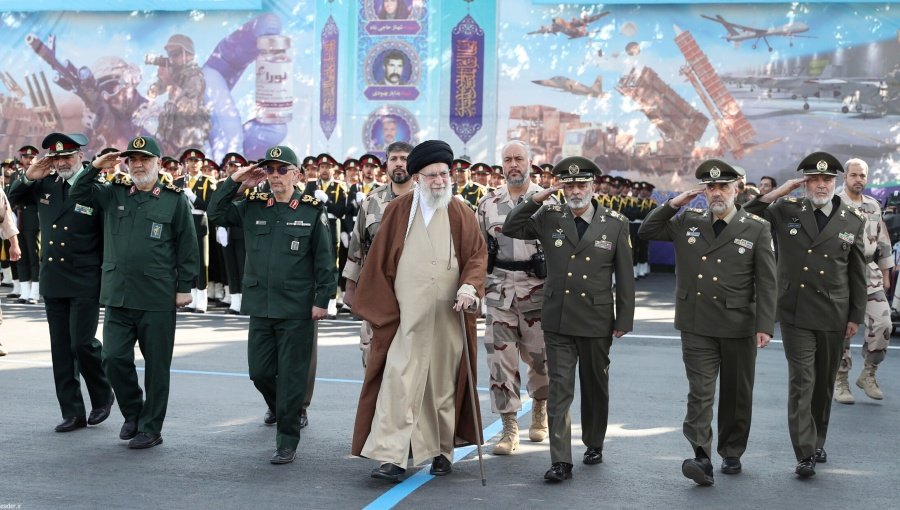UPDATES
Gaza casualties: Israeli report refutes widely cited UN figures
Jun 18, 2015 | Allon Lee

A mainstay of many news stories mentioning last year’s war between Israel and Hamas is the claim that the United Nations has found that 69 per cent of the 2,100 plus Palestinian fatalities were civilian.
For instance, earlier this week the ABC’s Middle East correspondent Sophie McNeill stated in a radio piece that, “During last year’s war, approximately 2,100 Palestinians were killed, of which the UN estimates 69 per cent were civilians.” It’s also routinely included in articles in mainstream Australian newspapers – generally without any acknowledgement that this figure has long been strongly disputed by Israel.
Even as the war raged, this ratio of combatants to civilians was hotly disputed. Israeli sources have long maintained that the number of combatants killed was significantly higher than 31 per cent and, therefore, civilian deaths much lower.
Now, a new report by the Israeli Government into last year’s war puts forward figures which appear to not only comprehensively refute that universally cited 69 per cent statistic, but also to demonstrate why it is so far from the truth.
The report states that:
IDF’s preliminary analysis has determined that 2,125 Palestinians were killed during the 2014 Gaza Conflict. Of these fatalities, the IDF estimates that at least 936 (44% of the total) were actually militants and that 761 (36% of the total) were civilians; efforts are still underway to classify the additional 428 (20% of the total).
It is significant that, according to the report, “almost all” of the 20 per cent of fatalities Israel has yet to classify were males aged between 16 and 50 (the range considered to be of fighting age) and that “based on past experience, it is highly probable that in the upcoming months…some of these individuals” will be identified as combatants.
The report’s categorisation of the reported dead was reached by “cross-checking the identities of men aged 16 to 50 in Israeli intelligence community databases to check for involvement in hostilities” and “matching names of the deceased to information that documented operational events (in particular, incriminating evidence of rocket launching or preparation)”.
The report found that, of the identified members of terrorist groups, “631 (67% of the militants killed) were affiliated with Hamas, 201 (22% of the militants killed) were affiliated with Palestinian Islamic Jihad, and 104 (11% of the militants killed) were affiliated with other terror organisations.”
This Israeli method of researching the actual affiliations of those killed seems likely to be much more accurate that the method used by the UN to arrive at its figures, which involved relying on the Gaza Health Minister and the Gaza-based Palestinian groups such as the Palestinian Centre for Human Rights (PCHR), whose policy is to classify anyone as a civilian who was not in uniform with a weapon in their hand, fighting, at the time they were killed – even if they were a member of an armed terrorist group
The discrepancy between UN and Israel’s figures are, as the report explains, likely directly linked to the Hamas’ policy of “deliberately [seeking] to inflate the number of Palestinian civilian fatalities for its own strategic advantage by hiding the identity of militants”.
The UN’s figure of 69 per cent was sourced mainly from data issued by Gaza’s Ministry of Health, which is, crucially, controlled by Hamas:
The daily fatality lists published by the Gaza Health Ministry failed to categorize the deceased as a member of an organised armed group or a person directly participating in the hostilities, even where this information was known to the Ministry, in order to create the false perception that all Palestinians who had been killed were civilians not involved in the hostilities.
Hamas’ deliberate policy of “blurr[ing] the distinction between militants and civilians” also involved a well-orchestrated campaign that “enlisted the wider Gaza public”:
For example, on August 5, 2014, the Hamas-controlled Ministry of Interior in the Gaza Strip posted the following notice through social media:
The Ministry of the Interior and National Security [in the Gaza Strip] calls on all our [Palestinian] people and the resistance factions to be wary of disseminating information and pictures of fatalities of the resistance, and [about] mentioning details about [the circumstances of]their deaths as martyrs and where they died.
…In a similar vein, on July 11, 2014, the Ministry uploaded to its website, Facebook and Twitter pages guidelines for “social media activists” in the Gaza Strip. An excerpt from the guidelines states that:
Anyone killed or martyred is to be called a civilian from the Gaza Strip or Palestine, before we talk about his status in jihad or his military rank. Don’t forget to always add “innocent civilian” or innocent citizen in your description of those killed in Israeli attacks on the Gaza Strip…. Do not publish photos of military commanders. Do not mention their names in public, and do not praise their achievements in conversations with foreign friends.
The report noted other important aspects of Hamas’ disinformation campaign including how militants “donned civilian clothing in efforts to deceive IDF soldiers” which is “unlawful conduct”, thereby frustrating “attempts to distinguish between militant and civilian fatalities… including for the Gazan authorities”.
Furthermore, analysis of lists of the dead that were issued by Gaza’s Health Ministry also revealed “the inclusion of duplicate names, non-combat related deaths, combat-related deaths attributable not to the IDF but to Palestinian armed groups, and misrepresented ages. The lists also have omitted the deaths of certain individuals known to have been militants”.
Clearly, long after the war’s end, the 69 per cent statistic is an important weapon in the pro-Palestinian campaign to persuade the world that Israel is guilty of causing the deaths of disproportionate numbers of innocent civilians (although, even if it were true, the Gaza casualty figures would not represent a higher proportion of civilians killed than in similar conflicts involving armed groups in built-up urban areas like Gaza – thus World War II saw 65 percent civilian casualties. The British NGO Action on Armed Violence estimated that 78 percent of casualties of global conflicts in 2012 – most of which took place in much less crowded and urbanised areas than Gaza – were civilian, while the UN estimates that conflicts in the 1990s averaged 90 percent civilian casualties.)
Unfortunately, Israel’s effort to correct this 69 per cent statistic is dependent upon those very same media professionals who gullibly keep repeating it.
Hopefully professionals who accept the principle of impartiality will take the time to read the report and, at the very least, adjust how they report on the Gaza war in the future.
Allon Lee
Tags: Israel











